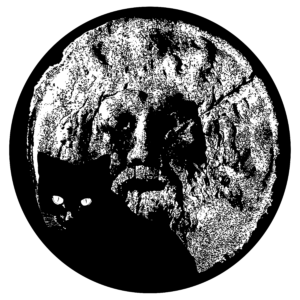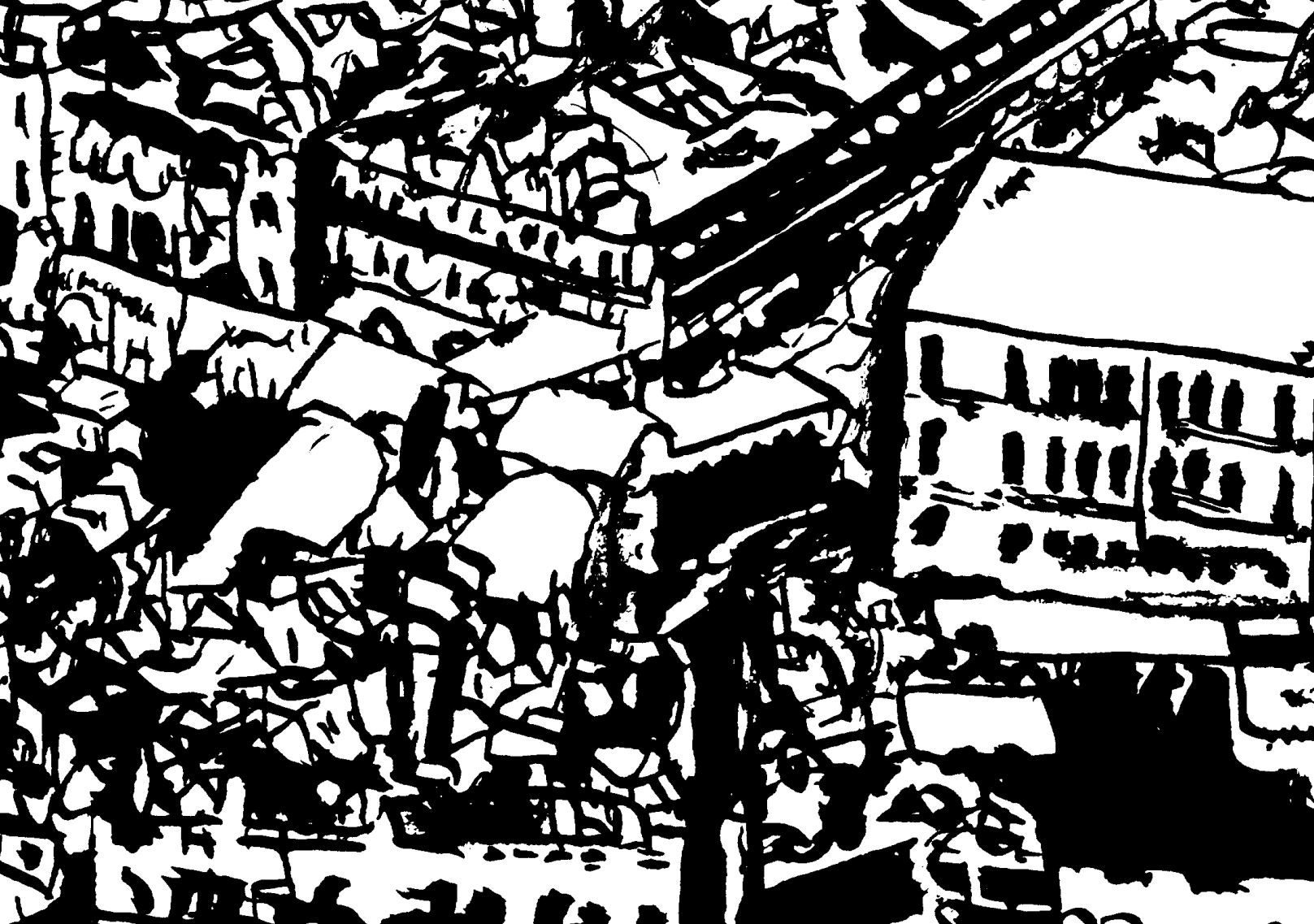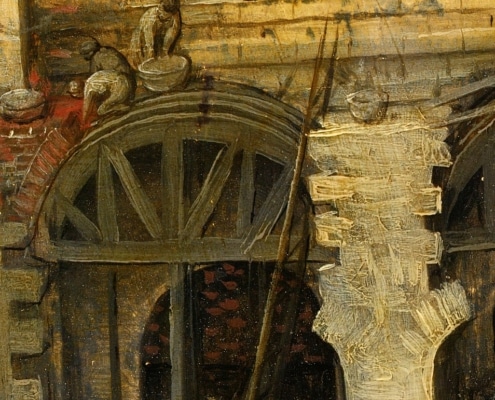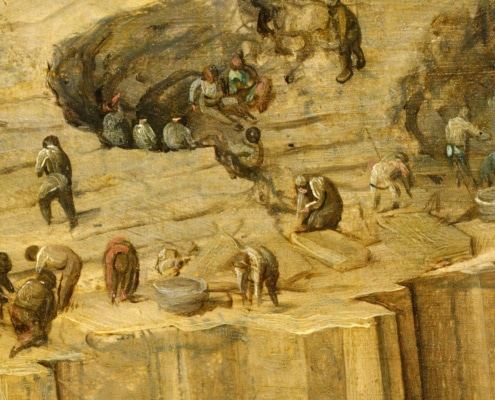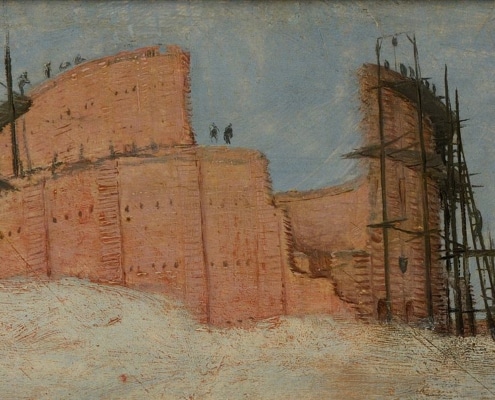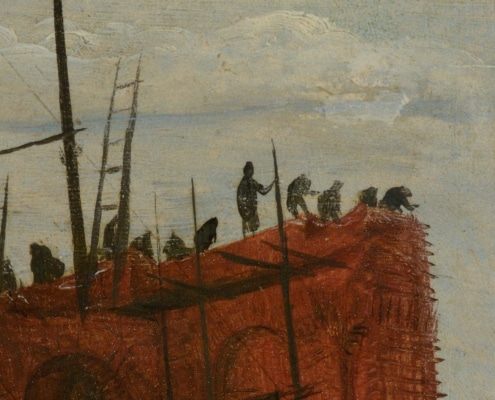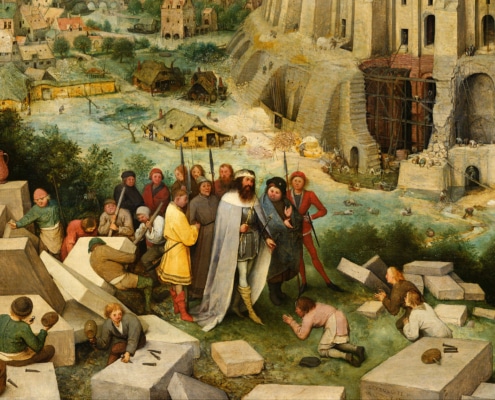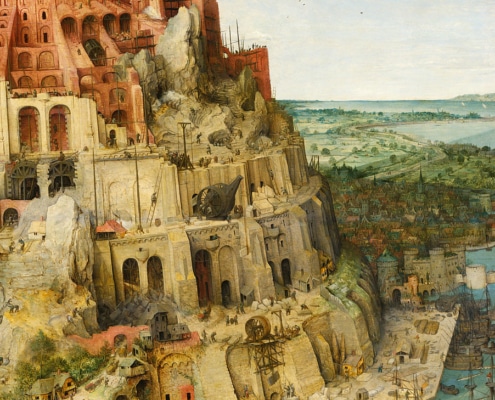“Dreaming of Babel”, Alexandre Mitchell, 2022 (42 x 59 cm, Indian ink)
The fascination with the myth of the Tower of Babel has barely waned since antiquity. Is this due to the obvious parallel with globalisation and the confusion of languages in most of our cities, or to the evocative power of a human tower capable of reaching the heavens?
There are so many interpretations of this story. Children read the Bible and devour the legends of Babylon and Egypt; teenagers discover science fiction stories and Isaac Asimov’s versions of the Tower of Babel or François Schuiten’s comic strips. As adults some will take the time to read the original texts and find out about Etemenanki. The biblical account included hidden jokes. Babylon was called in Akkadian ‘Bab-Ilum’, or ‘gate of god’ whereas Babylon was called ‘Babel’ by the Jews because in Hebrew babel means ‘confusion’.
After all, the Jews had been deported to Babylon from their ancient Kingdom of Judah by the Babylonian king Nebuchadnezzar II, and this would be a typical example of Jewish humour, taunting their captors by poking fun at their most prized city and ziggurat.
But what still captivates art lovers is the image of the Tower, and above all, Brueghel’s vision, preserved in the Vienna Museum of Art History. Rare are the paintings that leave most visitors speechless. It really does feel like a pathway to the stars. Dreaming of Babel stands at the confluence of the Tower of Babel and Venice, the city of countless historical layers. Bruegel’s tower emerges from the City, whose buildings stand out between light and shadow.
This is Venice at night and in winter, when the sky is pitch black, the streets are empty and the cold wind gushes through the narrow streets, made even colder by the wind blowing across its icy canals. It was once a city that held European kings in the palm of its hand and all adventurers, politicians, writers, artists and musicians sought out its intoxicating atmosphere. This city is an ode to urban palimpsests.
Further reading
- Asimov, I., Asimov’s Guide to the Bible, vol.1: The Old Testament, Avon Books, 1971, esp. pp. 54–55.
- Isaacs, J., The Tower Of Babel | online
- George, Andrew, “The Tower of Babel: Archaeology, history and cuneiform texts” Archiv für Orientforschung, 51 (2005/2006), pp. 75–95 | online
- Peeters, B., Schuiten, F., La Tour, Les Cités obscures, 2008 | online
Resources
> To order
To order a lithograph of this drawing, go to the webshop.
